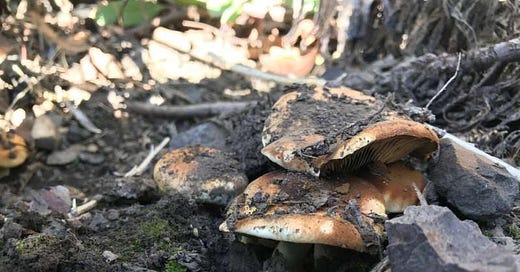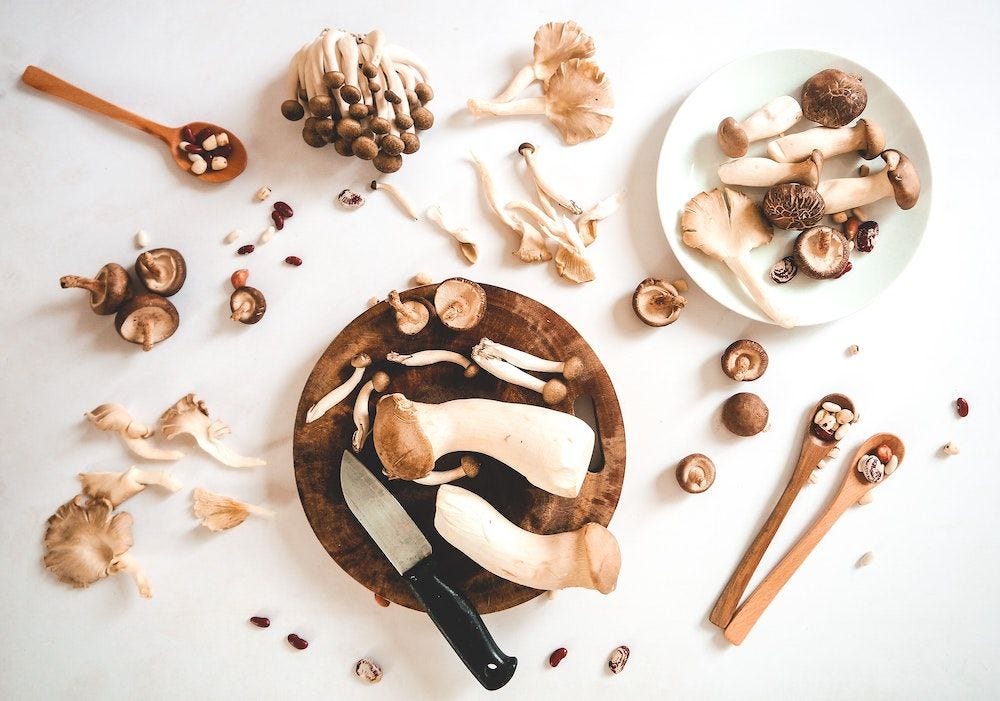Hey there Fungi Friday fam,
Did you miss me last week? Hopefully not too much… but if you did, then not to worry, as we’re back with yet another edition of your favorite fungi newsletter on the internet, Fungi Fridays!
Been a busy few weeks revamping the Iowa Fungi website, planning our first spawn purchase of the year, getting the trailer situated and ready to go.. It’s even been unusually warm here in the midwest for this time of year, growing season is quickly approaching, maybe even faster than we’d anticipated!
That’s all I can say for now though, so let’s jump into the three features of the week!
Fungi and bacteria are binging on burned soil
Feature number one of the week covers a recent study published in the journal Nature, in which fungi and bacteria in soil are seen to be bingeing on carbon dioxide (CO2) from the atmosphere and storing it underground. The study showed that this process, known as "carbon sequestration," may be a significant factor in reducing atmospheric CO2 levels and mitigating the effects of climate change.
The researchers used isotopic tracing to follow the journey of carbon from the atmosphere into the soil. They found that, once in the soil, the carbon was rapidly taken up by fungi and bacteria and incorporated into their cells. The researchers also discovered that the microbes were able to store the carbon for long periods of time, sometimes for several decades.
This study highlights the important role that fungi and bacteria play in the carbon cycle. In addition to sequestering carbon, these microbes also play a crucial role in breaking down organic matter in the soil and releasing nutrients that plants can use. This process, called "soil respiration," is a major source of atmospheric CO2, making it an important area for future research.
The results of this study have important implications for the field of carbon sequestration. In the past, the focus has been on large-scale, industrial carbon capture and storage systems. However, this research shows that the natural processes of soil respiration and carbon sequestration by fungi and bacteria may be just as effective, if not more so, in reducing atmospheric CO2 levels.
In conclusion, the study suggests that efforts to mitigate climate change may benefit from a better understanding of the processes that regulate carbon sequestration in soil. By working to understand and enhance these processes, researchers may be able to harness the power of fungi and bacteria to help reduce atmospheric CO2 levels and mitigate the effects of climate change. This could have important implications for both the scientific community and for policymakers working to address the challenge of climate change.
Seven Reasons Why Mushroom is a Superfood
Article number two of the week breaks down seven different reasons why mushrooms can be considered a superfood. This article was short and sweet, getting straight to the point. So let’s get into the seven points it shared…
Mushrooms are rich in Vitamin B and produce red blood cells
With low amounts of sodium, mushrooms take care of your heart
Button mushrooms contain potassium, which helps to reduce anxiety
Mushrooms help the visible signs of aging
Being a good source of Vitamin D, mushrooms help strengthen bone health
Mushrooms can help boost memory
Mushrooms can protect from neurological illness
Mushroom Skincare Is Huge Right Now
And for our final feature of the week, let’s talk once again about mushrooms and skincare. Mushrooms have become a popular ingredient in skincare products due to their numerous benefits for the skin. They contain antioxidants, anti-inflammatory compounds, and polysaccharides, which help to hydrate and soothe the skin. Some of the most common mushrooms used in skincare include reishi, shiitake, and chaga.
Reishi mushrooms have been shown to have anti-aging effects, thanks to their high levels of antioxidants. They can help to protect the skin from environmental stressors and improve its overall appearance. Shiitake mushrooms contain lentinan, a polysaccharide that has been shown to have moisturizing properties. Chaga mushrooms are rich in melanin, which can help to protect the skin from UV damage.
In addition to their skin benefits, mushrooms are also highly sustainable and eco-friendly. They are easy to grow and require little water and pesticides, making them a great option for those who want to be environmentally conscious. Many skincare brands are now using mushrooms in their products, from serums and creams to face masks and toners.
Mushroom skincare products are suitable for all skin types, and they can help to improve the skin's texture, hydration, and overall health. They can also be used in combination with other natural ingredients, such as herbs and essential oils, to enhance their effects.
In conclusion, mushrooms are a great ingredient for skincare products, offering numerous benefits for the skin. Whether you have dry, oily, or sensitive skin, incorporating mushroom skincare products into your routine can help to improve your skin's health and appearance. So why not give them a try and see the difference for yourself?
Want even more? Here are some other interesting, mushroom focused reads of the week:
Australian approval of MDMA and psilocybin a ‘baby step in the right direction’, medical experts say
Psychedelics Open Your Brain. You Might Not Like What Falls In.
Uncovering the unusual and intriguing world of fungi (Podcast)
As always, thank you for reading this weeks edition of Fungi Friday’s! We are especially thankful for all of you who spend your Friday lunch with us, learning about all things Fungi. If you enjoyed what you found, please feel free to forward to friends also interested in the Fungi Community!
And if you were forwarded this post and enjoyed what you found, please subscribe below:



